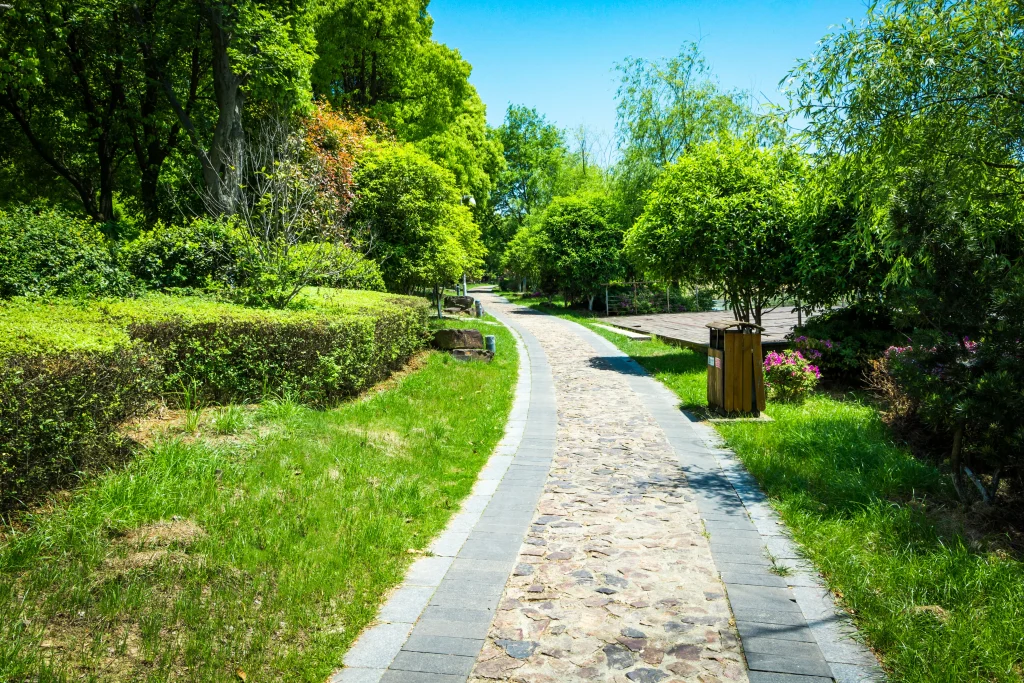Ordering landscape rock can feel intimidating – too much, and you overspend; too little, and your project stalls halfway. This guide takes the guesswork out of landscaping rock calculations, helping Denver homeowners determine exactly how much rock they need – no more, no less.
You’ll learn easy formulas, and local tips tailored to Colorado’s unique soil and slope conditions so you can plan confidently, save money, and get professional results.
See related:
- How much does landscaping rock cost in Denver? A detailed pricing breakdown
- How much does landscape rock removal cost? Denver’s complete 2025 pricing guide
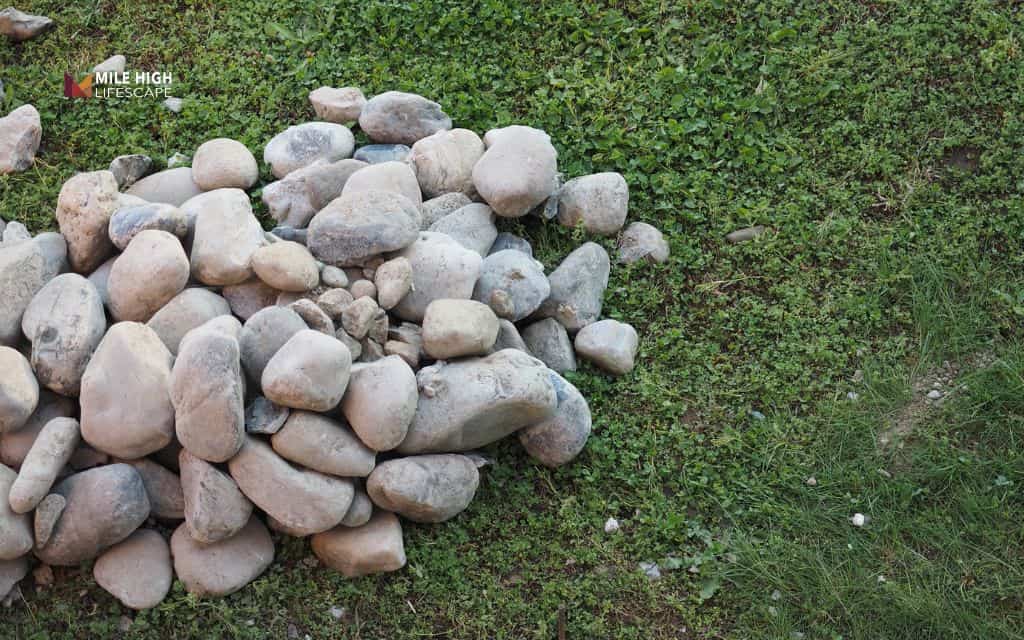
Guide to calculate how much landscape rock you need
Step 1: Measure your area
Start by measuring length × width in feet for rectangular spaces like front yard beds or side gardens. For irregular shapes common in Denver’s older neighborhoods, divide into smaller rectangles or circles for easier calculation.
Example: Your xeriscape front yard bed measures 15 ft × 8 ft = 120 square feet.
Step 2: Determine desired depth
Choose your rock depth based on your project’s specific needs:
- Decorative beds: 2 inches with ¾” river rock
- Driveways & walkways: 3 inches with 1 – 1½” gravel
- Drainage zones: 4 – 5 inches with 1½ – 3″ rock
- Xeriscape groundcover: 2 – 3 inches with mixed size stones
Denver Tip: In our dry, high-altitude environment, aim for 2 – 3 inches for most decorative applications, enough for effective weed suppression without creating drainage issues during spring runoff.
Step 3: Use the rock volume formula
Apply this simple formula to calculate landscape rock volume:
(Length × Width × Depth) ÷ 27 = Cubic Yards
Using our example: 120 sq. ft. × 0.17 ft (2 inches converted to feet) ÷ 27 = 0.75 cubic yards
Use this as your starting point, then round up slightly to account for Denver’s rocky soil conditions and natural slope variations that require extra coverage.
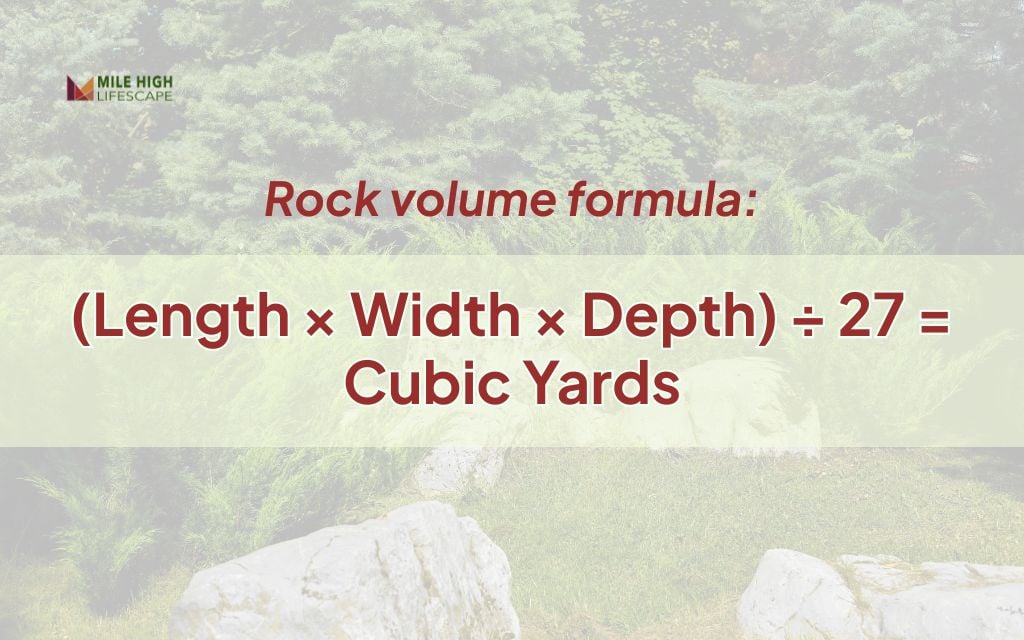
Convert cubic yards to tons (for ordering)
Most Denver suppliers sell rock by the ton rather than cubic yards. Here are the approximate conversions you’ll need:
- River rock: 2,600 lbs (1.3 tons) per cubic yard
- Crushed granite: 3,000 lbs (1.5 tons) per cubic yard
- Pea gravel: 2,800 lbs (1.4 tons) per cubic yard
- Conversion Formula: Cubic yards × weight per yard ÷ 2,000 = tons needed
Example: 0.75 yd³ × 2,600 ÷ 2,000 = 0.97 tons
Round up to 1 full ton to ensure complete coverage for your Denver landscape project.
Reasons to calculate landscape rock
Save money & avoid waste
When you calculate landscape rock accurately, you prevent over-ordering that leads to leftover piles cluttering your driveway for months. More importantly, you avoid under-ordering that forces costly repeat deliveries, especially crucial when Denver suppliers charge $75-100 delivery fees for each trip to your home.
Ensure proper coverage
Adequate rock depth keeps weeds down and soil stable throughout Colorado’s intense growing season. Too much rock can suffocate plants or disrupt drainage during spring snowmelt, while too little allows aggressive weeds like bindweed to push through your beautiful landscape design.
Plan smarter for Denver’s terrain
Rocky, sloped yards common throughout the Front Range affect volume needs significantly. Denver’s freeze-thaw cycles can cause settling over winter months, so smart homeowners plan for seasonal top-ups when they calculate landscape rock quantities initially.
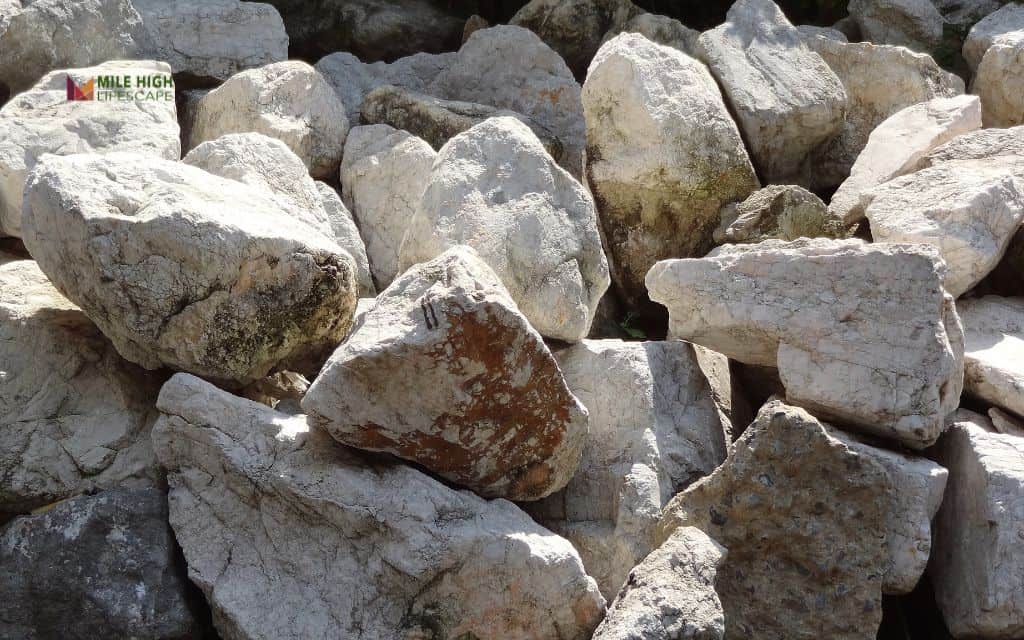
Choosing the right rock type for your project
Select rock types that complement Colorado’s climate and your specific landscaping goals:
- River rock ($80 – $130/ton): Perfect for decorative beds and borders with natural, smooth texture
- Pea gravel ($60 – $100/ton): Ideal for garden paths and children’s play areas
- Crushed granite ($70 – $120/ton): Excellent for driveways and xeriscapes
- Lava rock ($100 – $160/ton): Lightweight option for decorative beds with bold color options
- Cobblestone ($120 – $180/ton): Classic choice for accent areas and permanent edging
Tip: Choose lighter-colored rocks to reduce heat absorption and minimize water evaporation in Denver’s intense high-altitude sunshine.
Read more: Top 8 landscaping rock types for designing a Denver yard in Colorado’s climate
Denver-specific factors that affect rock quantities
Slope & erosion
When you calculate landscape rock for sloped properties throughout Denver’s foothills and elevated neighborhoods, plan for 10 – 15% more material than flat surfaces require. Gravity naturally redistributes rocks downward over time, creating thin spots at the top of slopes.
Use larger rocks (1½ – 2 inches) for stability on hillsides (like Green Mountain, Lookout Mountain, and the western edges of Lakewood). These heavier stones resist movement during thunderstorms and spring snowmelt periods.
Sun, wind, and freeze-thaw
Wind-prone neighborhoods (Highlands Ranch, Parker, and Commerce City) may need deeper coverage or decorative rock edging to prevent smaller stones from scattering. Denver’s notorious chinook winds can redistribute lightweight materials across your yard and into neighbors’ properties.
Expect freeze-thaw cycles to compact underlying soil throughout winter months. This natural settling process typically results in a 5 – 10% “loss” in apparent rock coverage by spring.
Factor this seasonal adjustment into your initial calculations to maintain consistent appearance year-round.
HOA & xeriscape standards
Many Denver suburbs including Stapleton, Lowry, and newer developments in Aurora set maximum rock coverage percentages to maintain neighborhood aesthetics. Review your HOA covenants before finalizing rock quantities to ensure compliance with community standards.
Check Denver Water’s Xeriscape Program for rebate-compatible designs that can offset your landscaping costs. Their guidelines often specify minimum plant-to-rock ratios that directly impact how much material you’ll need to calculate landscape rock coverage effectively.
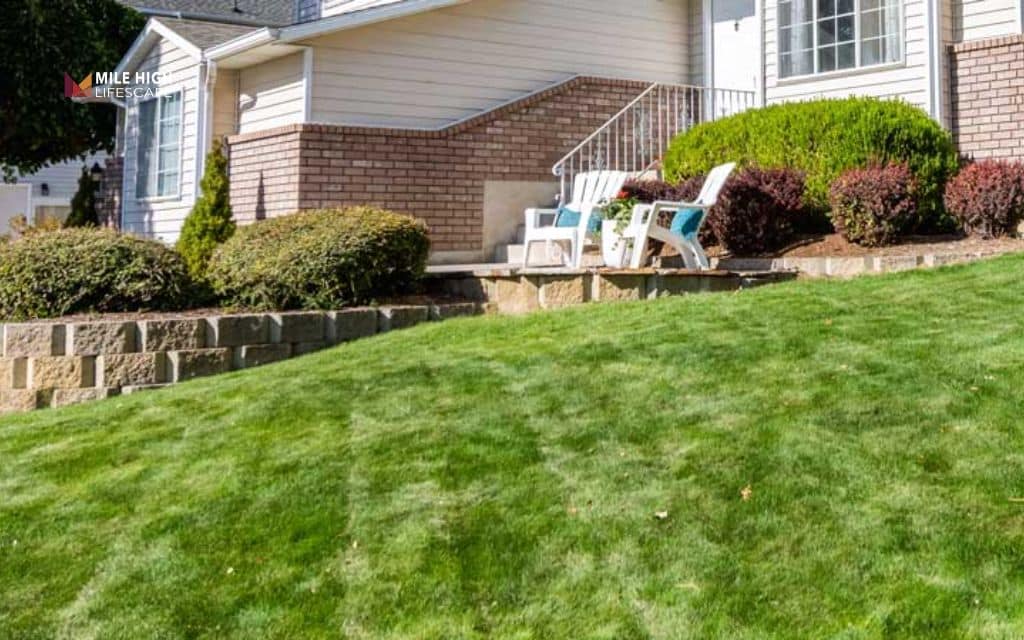
Conclusion
Learning to calculate landscape rock doesn’t have to complicate your Denver gardening projects. With the right formula, reliable measurement techniques, and local insights about Colorado’s unique conditions, you can order the perfect amount for your yard.
Whether you’re designing a drought-resistant xeriscape or refreshing rock beds, accurate calculations ensure lasting beauty and environmental sustainability.
Ready to transform your outdoor space?
For nearly two decades, Mile High Lifescape has been proudly serving the Denver Metro area as the go-to landscape company. We offer a range of friendly and professional landscaping and lawn care services. Count on us to transform your outdoor space into a beautiful oasis today!
Frequently asked questions (FAQ)
How deep should landscape rock be for Denver gardens?
2 – 3 inches works perfectly for decorative beds; increase to 4 – 5 inches for drainage areas dealing with snowmelt.
How many square feet does a ton of rock cover?
Approximately 100 square feet at 2 inches deep, though coverage varies by rock type and density.
Can I reuse old rock from previous landscaping?
Absolutely, rinse thoroughly and re-level existing rock for fresh, updated coverage.
Should I use landscape fabric under my rock?
Yes, install permeable weed barrier fabric (never plastic) for long-term weed control in Denver’s challenging growing conditions.
